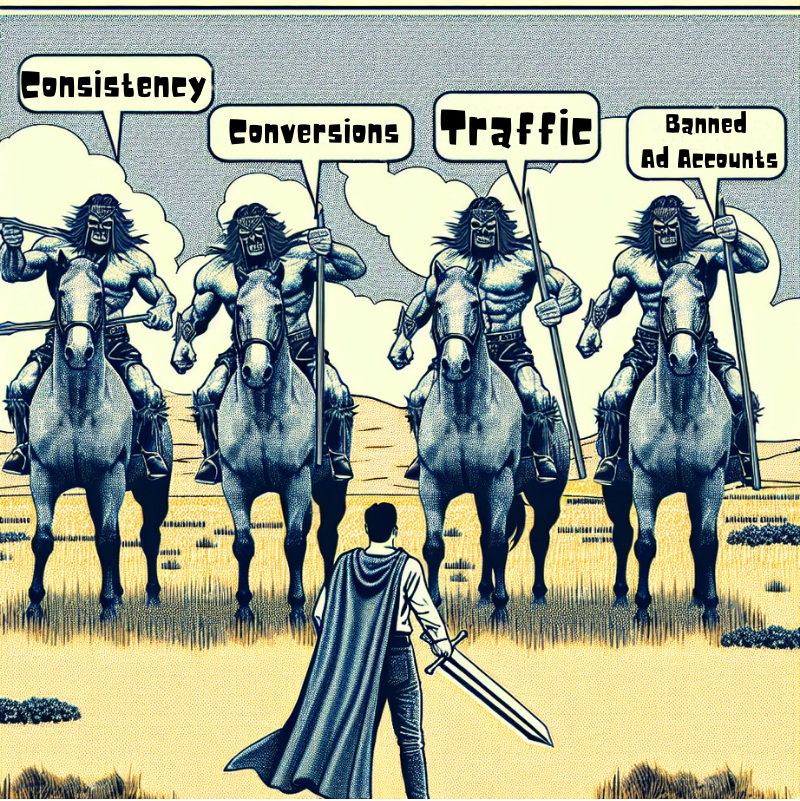Hey there, fellow entrepreneurs and digital marketing enthusiasts! Eric Edmond here, and today we’re diving deep into a topic that’s crucial for anyone looking to boost their online presence: image SEO optimization. Trust me, this isn’t just some fancy tech jargon – it’s a game-changer that can seriously level up your website’s performance and visibility.
Now, I know what you’re thinking: “Ric, come on, isn’t SEO all about keywords and backlinks?” Well, my friends, that’s only part of the story. In today’s visually-driven online world, images play a massive role in how search engines perceive and rank your site. Plus, let’s face it – we humans are visual creatures, and a picture is worth a thousand words (or in this case, maybe even a thousand clicks!).
So, buckle up and get ready for a wild ride through the world of image SEO optimization. I’ve got 10 killer strategies that’ll transform your images from mere eye candy into powerful SEO weapons. Let’s dive in!
- Choose the Right File Format: Your Secret Weapon
Alright, let’s kick things off with a biggie – file formats. Now, I know this might sound like a snooze fest, but trust me, it’s crucial. Think of file formats as the foundation of your image SEO strategy. Choose the wrong one, and you’re building on quicksand.
Here’s the deal: for photographs and complex images with tons of colours, JPEG is your go-to guy. It’s like the Swiss Army knife of image formats – versatile, reliable, and gets the job done. But when it comes to simpler graphics, logos, or icons, PNG is the way to go. It’s like the special forces of image formats – sleek, efficient, and perfect for specific missions.
But hold onto your hats, because there’s a new player in town – WebP. This modern format is like the superhero of image compression, offering better quality and smaller file sizes. Most browsers support it now, so it’s worth considering.
- Compress Those Images: Size Matters!
Next up, we’re talking compression. And no, I don’t mean squeezing into those jeans from college (though that’s a whole other challenge, am I right?). I’m talking about reducing your image file sizes without turning them into a pixelated mess.
Here’s why this matters: page load speed is a huge factor in SEO. Google loves fast-loading pages, and so do your visitors. Nobody wants to sit there twiddling their thumbs while your massive image files crawl onto the screen.
So, what’s the solution? Compression tools, my friends. They’re like personal trainers for your images, trimming the fat without losing the muscle. Check out tools like TinyPNG or ImageOptim – they’ll work wonders on your image sizes.
- Descriptive File Names: Don’t Be Lazy!
Okay, confession time. How many of you have image files on your site named something like “IMG001.jpg” or “DSC1234.png”? Come on, be honest – I see those guilty looks!
Here’s the thing: search engines can’t actually “see” your images (at least not yet). They rely on the information we give them, and that includes file names. So, when you use vague, meaningless names like “IMG001.jpg”, you’re telling search engines, “Nothing to see here, move along!”Instead, get descriptive! If you’re selling red leather shoes, name that image “red-leather-shoes.jpg”. It’s simple, it’s clear, and it gives search engines a big, fat clue about what’s in the image. It’s like leaving a trail of breadcrumbs for search engines to follow right to your content.
- Alt Text: Your Image’s Wingman
Now we’re getting to the good stuff – alt text. If file names are the breadcrumbs, alt text is the whole loaf of bread. It’s your chance to really tell search engines (and visually impaired users) what your image is all about.
But here’s the catch – you’ve got to do it right. No keyword stuffing, no novel-length descriptions. Keep it clear, concise, and relevant. Describe what’s in the image as if you were explaining it to someone who can’t see it.
For example, instead of “shoes red leather buy now best price”, go for something like “Red leather high-heel shoes with pointed toe”. See the difference? The first one screams “I’m trying to game the system!”, while the second one describes the image.
- Image Sitemaps: Roll Out the Red Carpet
Alright, pop quiz time: do you have an image sitemap? If you’re scratching your head right now, don’t worry – you’re not alone. But trust me, this is something you want to get on board with ASAP.
An image sitemap is like rolling out the red carpet for search engines. It’s a way of saying, “Hey Google, check out all these awesome images I’ve got!” You can either create a separate image sitemap or include image information in your existing XML sitemap.
Either way, you’re making it super easy for search engines to find and index your images. And in the world of SEO, making things easy for search engines is always a good move.
- Responsive Images: One Size Doesn’t Fit All
Let’s talk responsive design. In today’s multi-device world, your images need to look good whether they’re on a 27-inch desktop monitor or a 5-inch smartphone screen. That’s where responsive images come in. Implementing responsive image techniques means serving up appropriately sized images for different devices and screen sizes. It’s like having a tailor for your images, making sure they always fit just right.
Not only does this improve user experience (because nobody likes zooming and scrolling just to see an image properly), but it also helps with page load times. And remember what we said about Google loving fast-loading pages? Exactly.
- Strategic Image Placement: Location, Location, Location
You’ve heard the old real estate mantra: location, location, location. Well, guess what? It applies to image SEO too!
When it comes to image placement, think strategically. Put your most important images near the top of the page. Surround them with relevant text. This helps search engines understand the context of the image and how it relates to your content.
It’s like throwing a party – you want to put your VIP guests (your important images) in the best spots, not tucked away in some corner where nobody will notice them.
- Unique Images: Stand Out from the Crowd
Okay, I get it. Stock photos are easy. They’re convenient. They’re often pretty high quality. But here’s the thing – they’re also everywhere.
Whenever possible, use original images. I know, I know – not everyone’s a professional photographer. But even a decent smartphone camera can take pretty good pictures these days. And if you really can’t avoid stock photos, at least try to choose ones that aren’t overused.
Using unique images helps your content stand out. It gives your site personality. And from an SEO perspective, it can help you rank better in image search results. After all, if Google has to choose between showing the same stock photo it’s seen a million times or a unique image, which do you think it’ll prefer?
- Lazy Loading: The Art of Procrastination
Now, I’m not usually one to advocate for laziness, but when it comes to image loading, a little procrastination can be a good thing. Enter lazy loading.
Lazy loading is a technique where images that aren’t immediately visible on the page (like those further down) don’t load until the user scrolls to them. It’s like only setting the table for dinner when your guests arrive, instead of having everything out all day.
This can significantly improve page load times, especially for image-heavy pages. And by now, you should be chanting “faster load times = better SEO” in your sleep!
- Optimize for Google Lens: The Future is Now
Last but not least, let’s talk about the future of search – visual search. Tools like Google Lens are changing the game, allowing users to search using images instead of text.
So how do you optimize for this? Well, many of the techniques we’ve already discussed will help. But you can also consider things like:
- Using clear, high-quality images
- Including text in your images where appropriate (like infographics)
- Make sure your images accurately represent your products or content
Visual search is still evolving, but getting ahead of the curve now could pay off big time in the future. Wrapping It UpPhew! We’ve covered a lot of ground here, folks. From file formats to lazy loading, we’ve explored 10 powerful strategies for optimizing your images for SEO. But remember, this isn’t a one-and-done deal. SEO is an ongoing process, and image optimization should be a regular part of your routine. So, what are you waiting for? It’s time to give your images the SEO love they deserve. Trust me, your website (and your search rankings) will thank you for it.
This is Eric Edmond, signing off. Keep hustling, keep optimizing, and I’ll catch you on the flip side!





